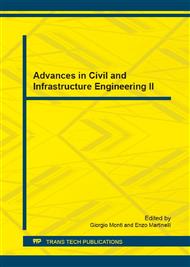p.135
p.141
p.146
p.156
p.166
p.173
p.183
p.191
p.204
Modified Monti-Nuti Model for Different Types of Reinforcing Bars Including Inelastic Buckling
Abstract:
The material model for reinforcing bar takes a very important role in the seismic analysis of reinforced concrete structures. The seismic performance of the structural elements such as column will be overestimated if the inelastic buckling is not incorporated in the material model. The Monti-Nuti Model could consider the buckling effect properly. The critical slenderness and anisotropy were discussed which has an important effect on the seismic behaviors of the reinforcement. Then this paper proposed a modified Monti-Nuti Model for different types of reinforcing bars, such as carbon steel reinforcement and stainless steel reinforcement including inelastic buckling. Subsequently, the implementation of the modified Mont-Nuti Model in OpenSees was introduced. Through validating with the experimental curves, the numerical curves generated by the modified model verified its capability.
Info:
Periodical:
Pages:
166-172
Citation:
Online since:
July 2016
Authors:
Price:
Сopyright:
© 2016 Trans Tech Publications Ltd. All Rights Reserved
Share:
Citation:


